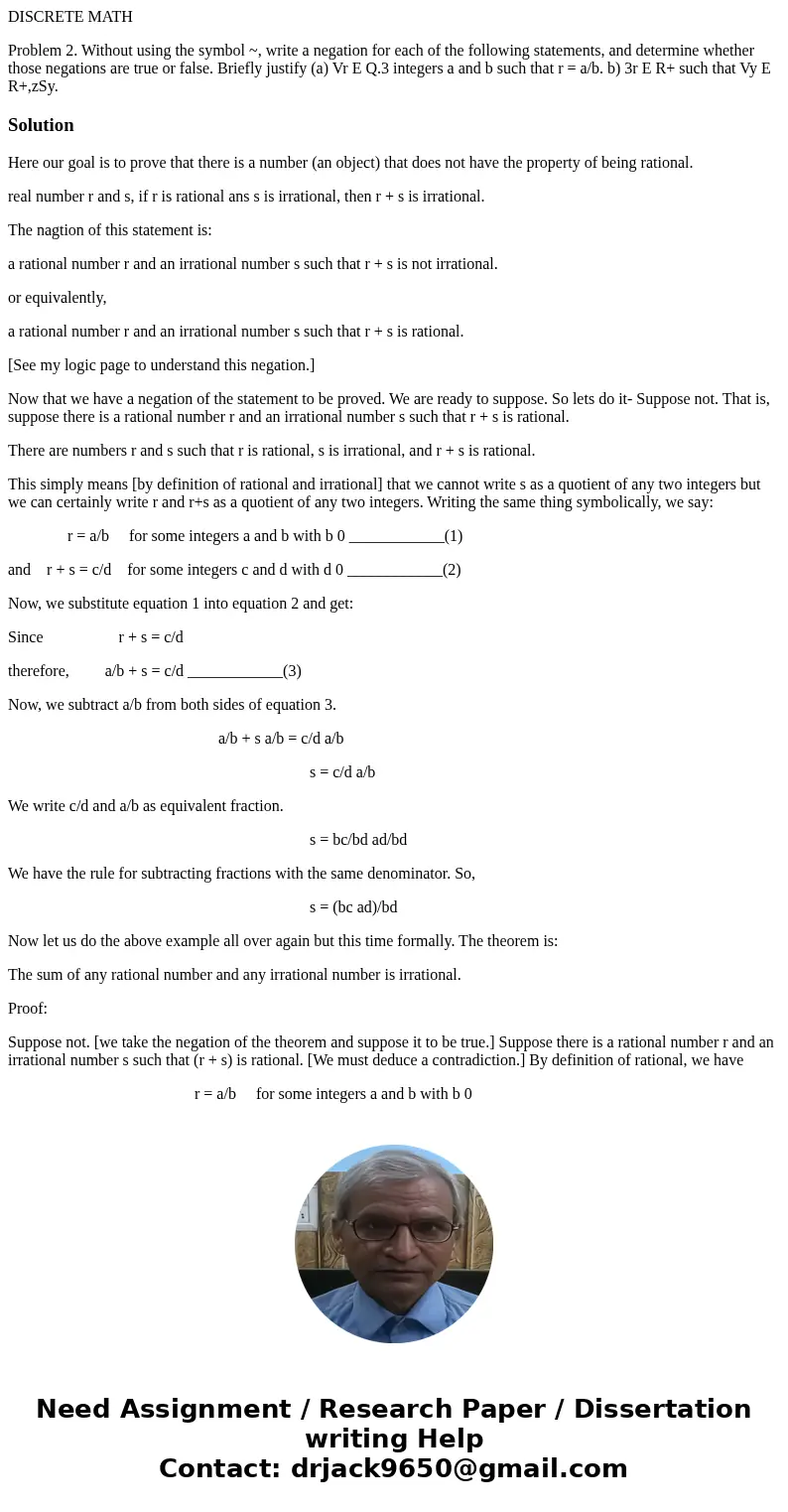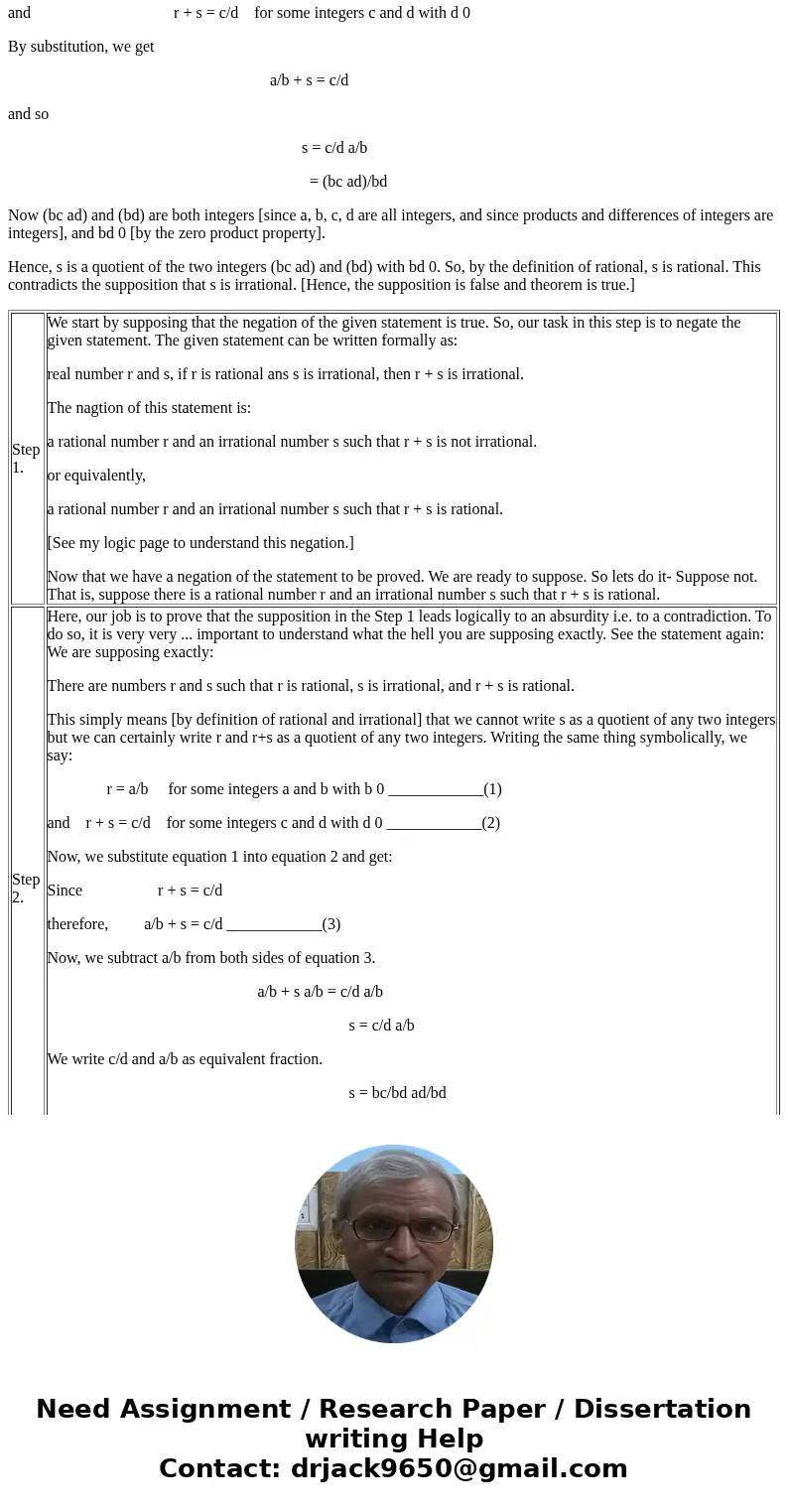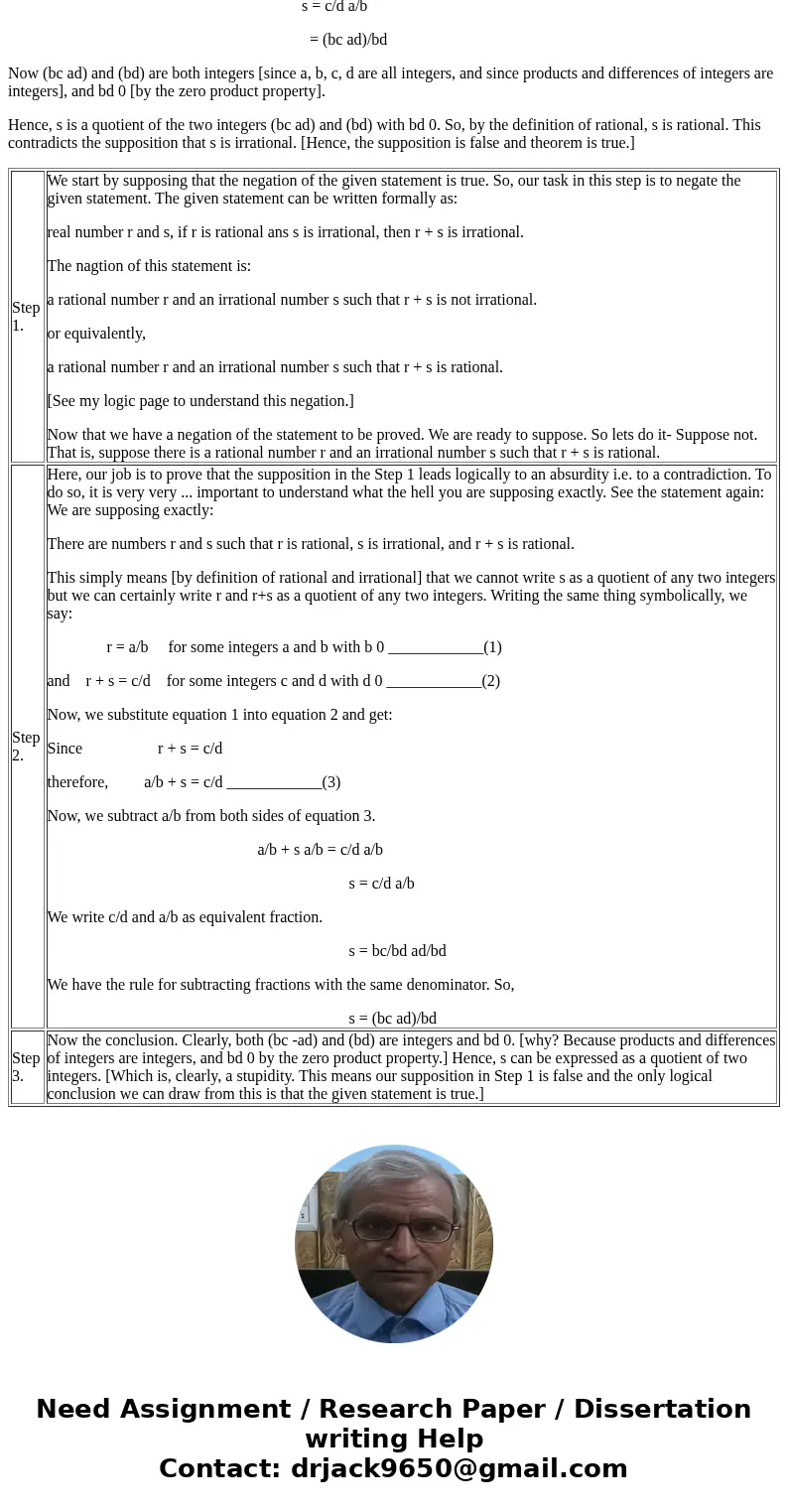DISCRETE MATH Problem 2 Without using the symbol write a ne
DISCRETE MATH
Problem 2. Without using the symbol ~, write a negation for each of the following statements, and determine whether those negations are true or false. Briefly justify (a) Vr E Q.3 integers a and b such that r = a/b. b) 3r E R+ such that Vy E R+,zSy.Solution
Here our goal is to prove that there is a number (an object) that does not have the property of being rational.
real number r and s, if r is rational ans s is irrational, then r + s is irrational.
The nagtion of this statement is:
a rational number r and an irrational number s such that r + s is not irrational.
or equivalently,
a rational number r and an irrational number s such that r + s is rational.
[See my logic page to understand this negation.]
Now that we have a negation of the statement to be proved. We are ready to suppose. So lets do it- Suppose not. That is, suppose there is a rational number r and an irrational number s such that r + s is rational.
There are numbers r and s such that r is rational, s is irrational, and r + s is rational.
This simply means [by definition of rational and irrational] that we cannot write s as a quotient of any two integers but we can certainly write r and r+s as a quotient of any two integers. Writing the same thing symbolically, we say:
r = a/b for some integers a and b with b 0 ____________(1)
and r + s = c/d for some integers c and d with d 0 ____________(2)
Now, we substitute equation 1 into equation 2 and get:
Since r + s = c/d
therefore, a/b + s = c/d ____________(3)
Now, we subtract a/b from both sides of equation 3.
a/b + s a/b = c/d a/b
s = c/d a/b
We write c/d and a/b as equivalent fraction.
s = bc/bd ad/bd
We have the rule for subtracting fractions with the same denominator. So,
s = (bc ad)/bd
Now let us do the above example all over again but this time formally. The theorem is:
The sum of any rational number and any irrational number is irrational.
Proof:
Suppose not. [we take the negation of the theorem and suppose it to be true.] Suppose there is a rational number r and an irrational number s such that (r + s) is rational. [We must deduce a contradiction.] By definition of rational, we have
r = a/b for some integers a and b with b 0
and r + s = c/d for some integers c and d with d 0
By substitution, we get
a/b + s = c/d
and so
s = c/d a/b
= (bc ad)/bd
Now (bc ad) and (bd) are both integers [since a, b, c, d are all integers, and since products and differences of integers are integers], and bd 0 [by the zero product property].
Hence, s is a quotient of the two integers (bc ad) and (bd) with bd 0. So, by the definition of rational, s is rational. This contradicts the supposition that s is irrational. [Hence, the supposition is false and theorem is true.]
| Step 1. | We start by supposing that the negation of the given statement is true. So, our task in this step is to negate the given statement. The given statement can be written formally as: real number r and s, if r is rational ans s is irrational, then r + s is irrational. The nagtion of this statement is: a rational number r and an irrational number s such that r + s is not irrational. or equivalently, a rational number r and an irrational number s such that r + s is rational. [See my logic page to understand this negation.] Now that we have a negation of the statement to be proved. We are ready to suppose. So lets do it- Suppose not. That is, suppose there is a rational number r and an irrational number s such that r + s is rational. |
| Step 2. | Here, our job is to prove that the supposition in the Step 1 leads logically to an absurdity i.e. to a contradiction. To do so, it is very very ... important to understand what the hell you are supposing exactly. See the statement again: We are supposing exactly: There are numbers r and s such that r is rational, s is irrational, and r + s is rational. This simply means [by definition of rational and irrational] that we cannot write s as a quotient of any two integers but we can certainly write r and r+s as a quotient of any two integers. Writing the same thing symbolically, we say: r = a/b for some integers a and b with b 0 ____________(1) and r + s = c/d for some integers c and d with d 0 ____________(2) Now, we substitute equation 1 into equation 2 and get: Since r + s = c/d therefore, a/b + s = c/d ____________(3) Now, we subtract a/b from both sides of equation 3. a/b + s a/b = c/d a/b s = c/d a/b We write c/d and a/b as equivalent fraction. s = bc/bd ad/bd We have the rule for subtracting fractions with the same denominator. So, s = (bc ad)/bd |
| Step 3. | Now the conclusion. Clearly, both (bc -ad) and (bd) are integers and bd 0. [why? Because products and differences of integers are integers, and bd 0 by the zero product property.] Hence, s can be expressed as a quotient of two integers. [Which is, clearly, a stupidity. This means our supposition in Step 1 is false and the only logical conclusion we can draw from this is that the given statement is true.] |



 Homework Sourse
Homework Sourse